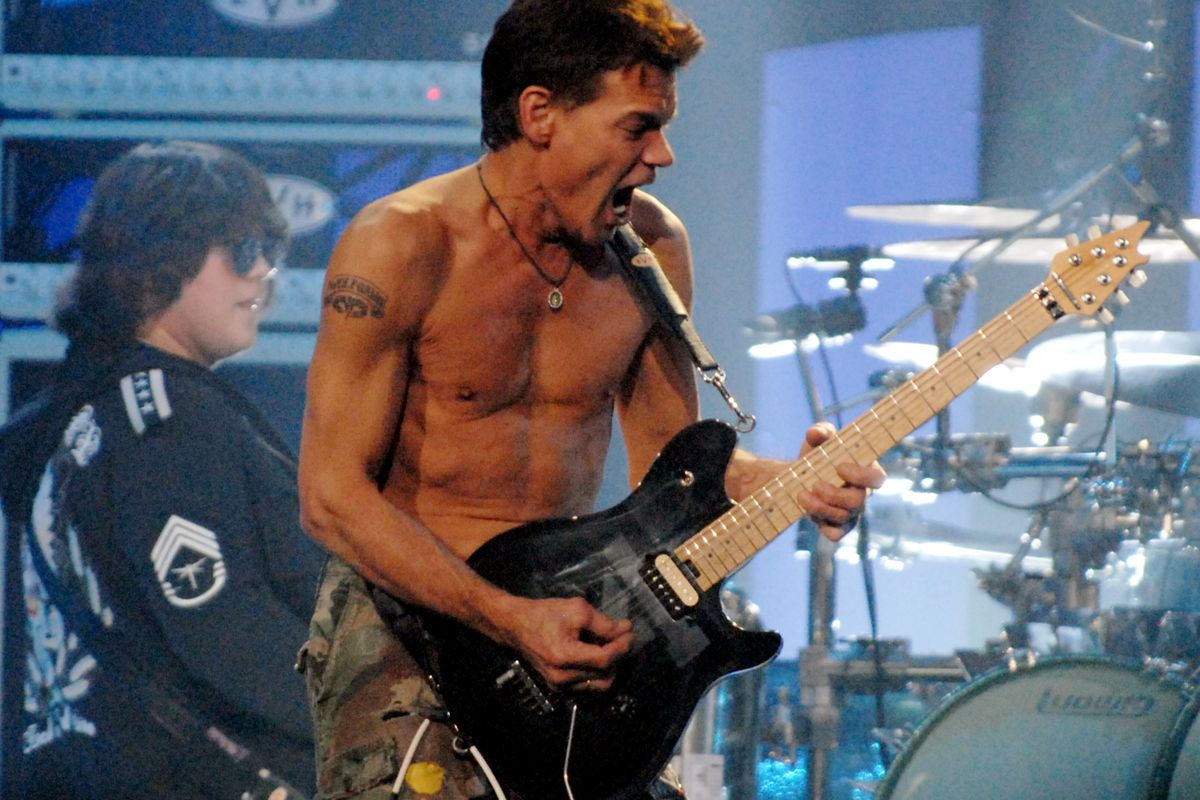What made Eddie Van Halen’s music divine was his quest for the perfect sound

Let’s start with the intro of “And the Cradle Will Rock” blasting out of your speakers, a monsoon crossed with a jet engine. When Van Halen released that song in 1980, the opener on the band’s third studio album, it didn’t sound like anything on Casey Kasem’s “American Top 40.”
Few understood why at the time because the band had tried to keep it a secret. We later learned that namesake band leader Eddie Van Halen, a guitar god by his 25th birthday, wasn’t playing guitar. He was working his wizardry, inventing a whole new musical language by hooking up a Wurlitzer electric piano to a Marshall amp and presumably cranking it up to a Nigel Tufneled 11.
Over the next few days, as we memorialize Van Halen, who died at age 65 on Tuesday from throat cancer, expect countless tributes noting his guitar-playing pyrotechnics, the finger-tapping, blazing speed and jigsaw puzzle of arpeggio chords crafted into perfectly constructed melodies (think “Panama” or “Unchained”). And indeed, those were key elements of what made Van Halen the most important guitar player of his generation. But for me, “Cradle’s” opening is the key to understanding his brilliance as a musical leader and the timelessness of his band.
As flashy as the band could be – and that’s not even taking into account lead singer David Lee Roth’s yapping or butt-revealing chaps – Van Halen’s true search was for the perfect sound.
Many tributes mention how Van Halen famously responded to grumbling, including from Roth, about his increasing use of keyboards in the 1980s. (The band had bassist Michael Anthony play the “Cradle” opening live, as if to hide that Van Halen had put down his guitar.) “If I want to play a tuba or Bavarian cheese whistle, I will do it,” Van Halen said.
That might sound obstinate. It wasn’t. For Van Halen, the point was musical. He was always searching and exploring with the tools he had available, just like John Coltrane or Stravinsky. The difference is that Van Halen made those sonic explorations fit within the framework of the most consumer-friendly rock band in America.
Those explorations might be a riff barely perceptible once layered into the music. They could become as central as the Oberheim he plays on “Jump,” or the processed synth line that drives “Why Can’t This Be Love?” or the growling guitar howls that form the call-and-response on “Everybody Wants Some.” For a guy who shrugged off his own achievements with a goofy grin – “Eruption” was a single take, and “I didn’t even play it right”; the uncredited solo on Michael Jackson’s “Beat It” only took two tries – Van Halen was a studio rat taking incredible care as he created waves of music.
Other guitarists treated their instruments like Ming-era artifacts. Van Halen viewed his instrument as one more tool. And if a certain function could not be achieved with a conventional model, he was going to hack through the wood with a hammer and chisel and turn it into a working instrument.
Hence, his Frankenstrat, a Fender Stratocaster body containing a Gibson ES-335 pickup. If you got a chance to see the original guitar at the Metropolitan Museum of Art’s recent “Play It Loud” exhibition, you were struck by its battered body. Even the distinctive design was created by slapping duct tape and red Schwinn bicycle paint on the wood.
In interviews, Van Halen would shrug off anything resembling self-importance. There was a dark edge to the sound, particularly on the band’s early records, but it was offset by the swagger and Roth’s opportune, spoken-word goofs.
The Sammy Hagar edition of the band, which churned out four consecutive No. 1 albums starting in 1986 after Roth exited, was often as sugary as a pack of Pop Rocks. And Van Halen’s records could be shockingly short: 1982’s “Diver Down” barely squeaked past 31 minutes, and that’s on a record that included covers of the Kinks, Martha and the Vandellas and Roy Orbison.
But even then, while covering some of the biggest hits of the American pop canon, Eddie Van Halen worked with deceptive precision. “(Oh) Pretty Woman” is rebranded by a spacey intro in which the guitar could be communing with sea creatures. “Dancing in the Street” pops with a programmed synthesizer line.
“It takes almost as much time to make a cover song sound original as it does writing a song,” he said at the time.
The proof is when you put on any of those albums. The message, musically, is direct and clear: You are listening to Van Halen – and this is Eddie’s band.